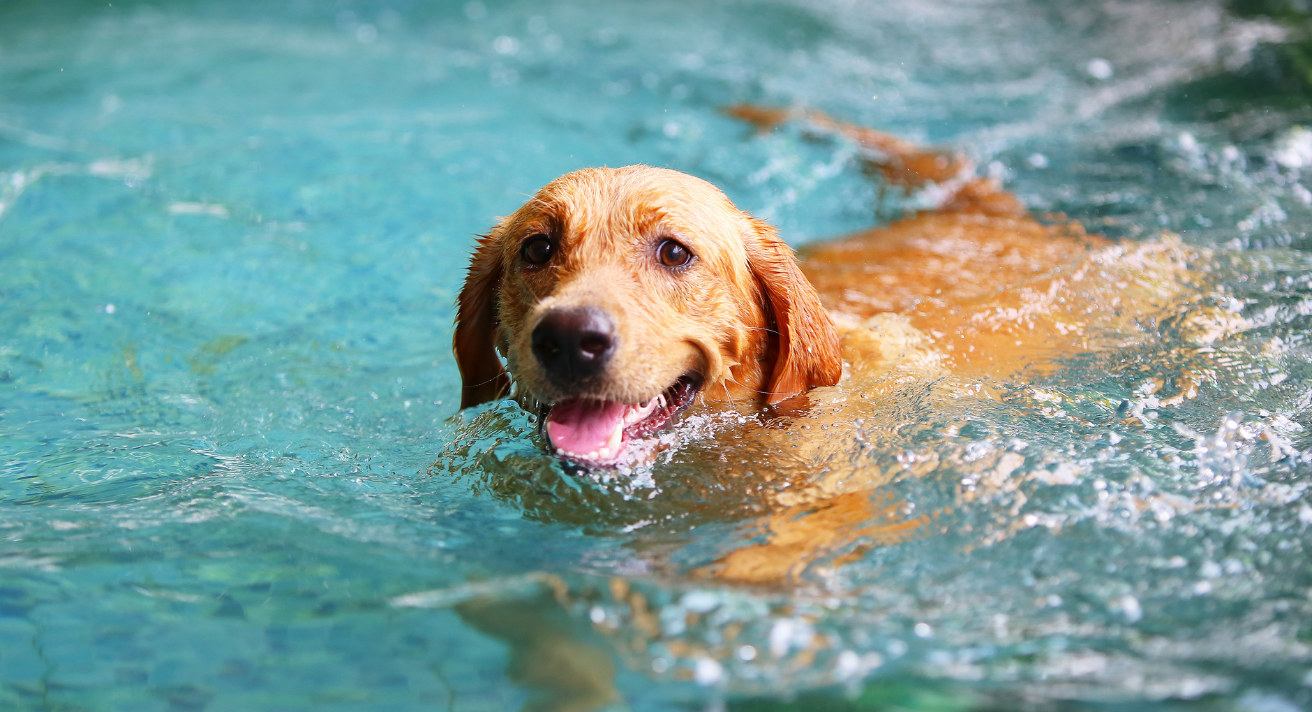When the temperatures shoot up, people naturally head for the water to cool down – often with their best friend in tow. But before you go jump in a lake with your dog, you need to know a few things about water safety with dogs.
Water can hold hidden dangers for both people and dogs. It’s always good to know what you’re getting into when you decide to take a dip. The surface can look fine but looks really can be deceiving.
Dangers in the Depths
Different bodies of water have their own combination of risks. With a little foresight, you can enjoy the water with your dog while avoiding these common dangers.
- Pollution, algae and other contaminants can pose life-threatening dangers. Avoid stagnant water where they can accumulate. Check for official assessments of water safety at any place you consider swimming and pay attention to local knowledge.
- Submerged objects – including fishing line and hooks – can catch your or your dog as you swim. Sadly, some people just dump things and a body of water that was safe last week might contain a shopping trolley underwater this week. Enter the water cautiously, alert to what is there when you first go in.
- Riptides are serious danger at the beach, and your dog has no ability to sense them. Our furry friends can detect any number of things we can’t. They have great instincts for who to trust, and experts are even training them to detect certain cancers - but dogs can’t detect a riptide and they have no instincts to help them if they get caught in one.
- Wildlife live in and around lakes, canals, beaches and rivers. When we go there, we’re on their territory and in the early summer especially they might have young. They will defend their babies (who wouldn’t?!) and can do serious damage to your dog and to you. Avoid areas where swans, herons and other birds nest.
Don’t Assume Your Dog Can Swim
The biggest risk with water is drowning. Because so many dog breeds are famous for retrieving from water, it’s easy to assume that all dogs can swim. But it’s false. Not all dogs can swim. Some breeds are at a real disadvantage in the water, and even with breeds such as retrievers and spaniels you can find individual dogs who fear the water and panic as well as those who just cannot swim. Small dogs can easily get into trouble in strong currents on a river or in the sea. Never force or throw a dog into the water. The fear some dogs feel in those situation can cause them to panic, putting them at greater risk.
If your dog does love swimming, and you are confident that the water is safe, you can pop a harness on them and let them wade and swim on their lead. This means that they can’t get too far out into deep water and you can pull them in if they get into trouble.
Ironically, it’s important to bath your dog any time they’ve been swimming. Even in fresh water, they can emerge with a residue of something that will irritate their skin. Even a quick rinse off is better than nothing, but a good bath with a quality dog shampoo is best. And you can always make amends if your dog hates bath time with some of their favourite treats.













